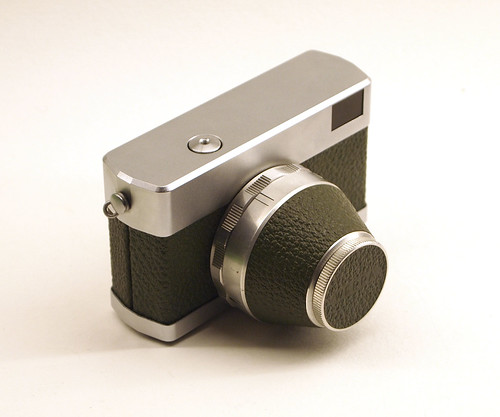 |
| Werra with 50mm Novonar f3.5 lens |
The Werra is a unique 35mm compact camera produced by Carl Zeiss Jena. The version I bought at the
Mauerpark flea market is the original olive green model with a 50mm Novonar f3.5 lens. This model is generally referred to as the Werra 1 to distinguish it from the subsequent versions, but at the time was simply called 'Werra'. Not knowing much about the Werra when I bought it, I had assumed that it dated from the 1960s, due to its streamlined design. However production began in 1954, and the serial number on my camera's lens dates it to 1955. Compare the look of the Werra with, for example, the
Kodak Signet or the
Baldessa, both 35mm viewfinder cameras contemporary to the Werra and it's easy to see how advanced its design was for the mid-1950s. One might speculate for the reason for this is that the Werra was made by Carl Zeiss Jena, principally a lens manufacturer, which made very few cameras. Perhaps it's a camera built around a lens, without being derived from any precedents. In keeping with the minimalist design, the camera is marked with just the name 'WERRA' embossed on the lens cap and rear of the body, 'Novonar' on the lens and the manufacturer's name is entirely absent.
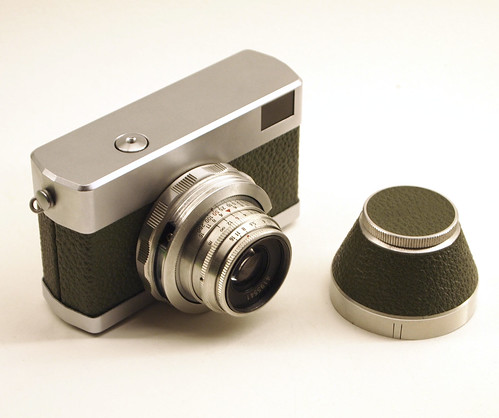 |
| Werra with lens cap/shade removed |
The two most distinctive aspects of the Werra's design are its unusual film advance, which works by turning the aluminium bezel around the lens, and the combined lens cap and shade. The lens cap can be unscrewed from the shade, the shade removed, reversed and attached. The camera's controls are located around the lens, and, with the frame counter on the underside of the camera, which leaves just the shutter release for the top plate. The original Werra is a completely manual camera, without a meter. However there are figures around the lens picked out in red for optimum exposure and focus: 1/50th of a second on the shutter, f8 for the aperture, and 6m on the focus ring, which at f8 gives a depth of field from just beyond 3m to nearly infinity.
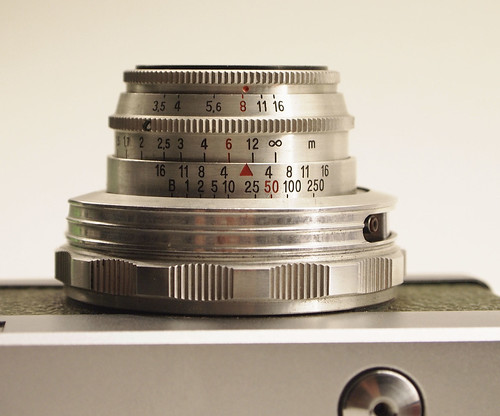 |
| Detail of figures picked out in red around the lens |
Obviously this depends on film speed and lighting conditions, but one can assume that these settings were designed to be used in fair daylight conditions with a film of medium speed. I used these settings to finish the film that was in the camera when I bought it. Raul M, in
his blog post about the Werra, suggests that
the shade can be left on covering the controls, effectively turning the Werra into a point and shoot camera. The entire back and bottom plate slides off to load the film, which travels from right to left, opposite to the direction 35mm film normally travels in a camera (although this is also true of the
Agfa Optima Sensor), meaning that the frames on the developed film appear to be upside down, and also read in sequence right to left.
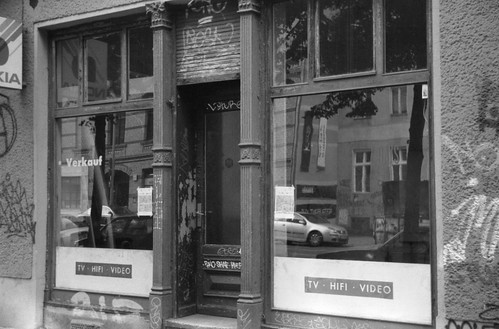 |
| Sample image from the Werra, FP4 stand developed in Rodinal 1:100 |
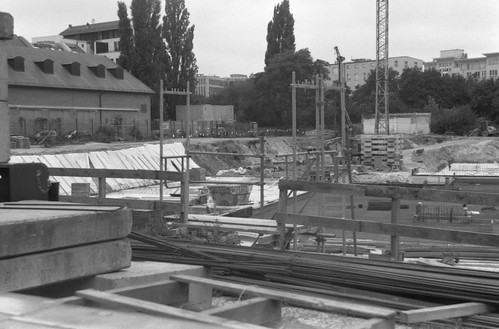 |
| Sample image from the Werra, FP4 stand developed in Rodinal 1:100 |





My Son has just bought a Werra 1 camera complete with matching leather case for a rediculously low price from an antique shop. Your comments on the optimal setting marked in red are very useful, thank you!
ReplyDeleteMike.
Thanks for your comment - it's a quirky camera, but quite enjoyable to use, and even the cheaper Novonar lens produces good results.
DeleteHi, i hope there is any one who can respond me, i have this camera, but i don`t know how to work, it`s a very weird camera, could someone has a manual or something like that? thank you
ReplyDeleteYou might light to try http://www.butkus.org/chinon/werra_i-v/werra_i-v.htm for a manual depending on which model you have.
Deletei have just bought a werra 1 from a charity shop for 5 pounds it works and is in amazing condition it really is a beautiful object cannot wait to put some film thru it glad i kept my gossen lunar light meter
ReplyDelete